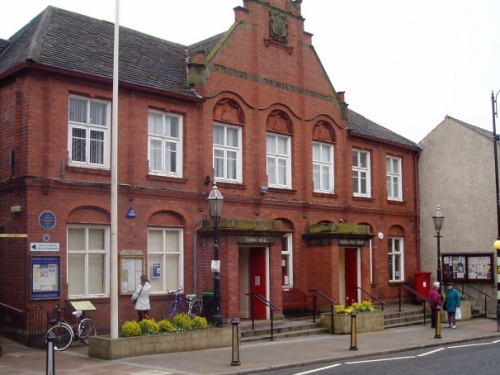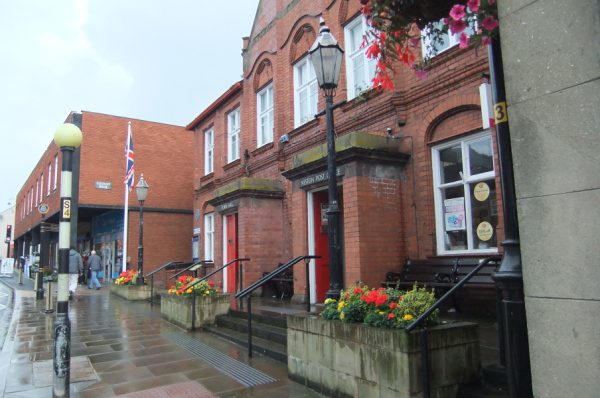History of Neston Town Council
In 2003, the committee of Neston Civic Society decided that the town of Neston would have greater influence with the then Borough Council of Ellesmere port and Neston if it had a a single representative voice expressed through a parish or town council. This led the Civic Society to contact the Cheshire Association of Local Councils to discuss the steps needed to establish a local council.
On 15 September 2005, the Civic Society organised a public meeting at Parkgate & Neston United Reformed Church. This was addressed by Chalky White, Development Officer of the Cheshire Association of Local Councils (ChALC) who presented what a local parish or town council could do. He explained that a local council would have to be consulted on matters affecting Neston and district. Parish councils had power to take action, but had fewer duties than the Principal Authorities such as the Borough or County Councils, which had a legal duty to deliver services such as education, health and social services.
A Parish Council could improve such things as grass-cutting, bus shelters, Christmas lights, crime prevention, or whatever Neston people decided they want. Mr White said that people with their own Town Councils reported an increased sense of pride in their community. He explained that a Parish Council in Neston could decide to become a Town Council, with the same rights and responsibilities.
Mr White said that there were 231 town or parish councils in Cheshire. They were financed largely by means of a council tax precept, the whole of which had to be spent for the benefit of those living within the parish council area. In addition many councils attracted funds from outside bodies, obtaining money that was not otherwise available.
Almost 100 local residents attended the meeting. Forty people volunteered to collect signatures, and 28 of these attended a training session with Chalky White in Neston Methodist Church. They needed to get signatures from 10% of the electors in the area, which meant around 50 signatures each, but in fact residents responded with great enthusiasm, and 2,530 electors signed, over 20%.
The area proposed was the built-up area of Neston from Parkgate to Ness.
In January 2006 Neston Civic Society delivered the petition to the Ellesmere Port and Neston Borough Council. In response they decided to send a leaflet to each household (not to each elector) asking for their response, pointing out that a Parish/Town Council would have to be paid for (suggesting £26 per property) and would add an extra tier of government.


The result was:
Ballot papers issued: 7,014
Ballot papers returned: 1,958 (28%)
“Yes” votes: 58.5%
“No” votes: 38.7%
“Don’t know” votes: 3.1%
Spoilt ballots: 0.5%
The Department of Communities and Local Government slowly processed the petition, and, in September 2007, Parmjit Dhanda, Parliamentary Under-Secretary of State ‘decided in principle to give effect to the petition to create a new Parish of Neston’.
In December 2007 Ellesmere Port and Neston Borough Council asked for views on the proposal that there should be five wards, Little Neston (2719 electors, 4 councillors), Riverside (2908 electors, 4 councillors), Neston (3015 electors, 4 councillors) Parkgate (3158 electors, 4 councillors) and Ness (781 electors, 1 councillor). Electors were given until 30 March 2008 to make representations but by then the council decided that it was too late to organise elections in 2008, so the first elections were postponed to May 2009 only to be postponed again to June 2009, to coincide with the European Elections, to save the cost of a separate election.
In November 2008 Neston Civic Society hosted a meeting at the URC for anybody interested in standing as a candidate for the Parish Council. Chalky White again spoke together with Jackie Weaver, Chief Officer of ChALC. They explained that most people over 18 who live within three miles of the Parish, or who work or own property in the parish, could be councillors. They could ask for training, and would be supported by a salaried Clerk, who would guide councillors in legal matters. Most councils met monthly, and limited meetings to no more than two hours. Detailed work was commonly done in Committees.
In Neston, Councillors would initially be elected for two years, and after that for four years.
The local political parties agreed not to contest the election but left their members free to stand as independents if any of them wished to.
In February 2009, Neston Civic Society organised a further meeting in the new Neston Community & Youth Centre, where Paul Edwards, the Mayor of Middlewich Town Council, and Nils Anderson, Borough Councillor for Parkgate, explained the processes in running a council. At another meeting was later in February in Neston Parish Church the Cheshire west & Chester Council Electoral Officer explained the timetable for the election.
In total 16 candidates were duly nominated for the 17 seats, a full complement for each ward except Riverside where a vacancy remained. Accordingly all 16 were duly declared elected.
At the Council’s first meeting on 18 June, the Council agreed formally to change its name from a parish council to Neston Town Council, Moira Andrews was elected its first Chairman and arrangements were made to advertise for persons to be considered for co-option to the remaining place. These were considered at the following meeting in July and one person was duly co-opted.
